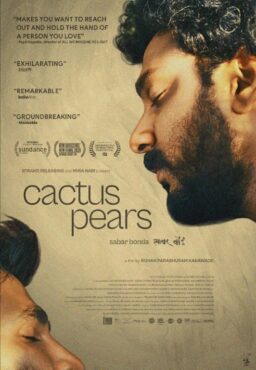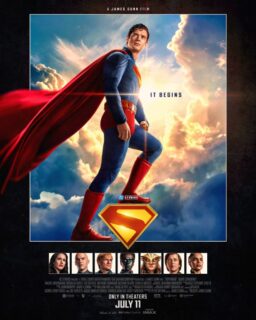It was the kind of story that made you willing to linger over the after-dinner coffee. “What do you know about the death of Thomas Ince?” Peter Bogdanovich asked me. I knew a little. Like everyone with a fascination for Hollywood gossip, I’d read Kenneth Anger’s legendary book Hollywood Babylon, in which he speculates that Ince, “The Wizard of Westerns,” died after drinking bootleg booze on William Randolph Hearst’s yacht.
“Hearst made the bad mistake of trying to hush up the whole affair,” Anger wrote. “The result was that the rumors kicked back on him: it was widely whispered that Hearst himself had killed Tom Ince when he caught the unfortunate Wizard in an intimate clinch with Marion Davies!” Davies was Hearst’s mistress.”
Orson Welles had a fascinating version of that story,” Bogdanovich told me.
“According to him, Willie was convinced Marion was having an affair with Charlie Chaplin. During a cruise on Hearst’s yacht, Hearst was overcome with jealousy and took a shot at a man he thought was Chaplin. It was a case of mistaken identity, and Thomas Ince was killed. The true story of the death never came out. In fact, despite his fame at the time, the cause of Ince’s death was never established, there was never an investigation, and no one on the yacht was ever questioned.”
“That sounds,” I said, “like a great idea for a movie.”
“It does, doesn’t it?” Bogdanovich said. “Orson Welles told me there was a version of the scandal in an early draft of the screenplay for ‘Citizen Kane’ the 1941 Welles film universally believed to be a thinly veiled version of Hearst’s life. But he took the scene out of the movie. Orson said, ‘I thought Hearst could have done it–but I didn’t think Charlie Kane was a killer.’ “
It happened that as Bogdanovich told me this story, we were aboard the QE2, crossing to Southampton on the 25th anniversary voyage of the Telluride Film Festival in 1998. When Bogdanovich returned to New York, there was a script waiting for him. It was an adaptation of Steven Peros’ play about the very same scandal. Fate was sending him a message. No director is more steeped in Hearst/ Welles/Kane/Hollywood lore than Bogdanovich, and now here is “The Cat's Meow,” his movie based on the long-ago rumors.
This is Peter Bogdanovich’s first theatrical movie in eight years, a comeback for a man who, like Welles, had an early Hollywood triumph and then was exiled to the outer darkness of the unbankable. A film critic and magazine writer, Bogdanovich was only 31 when he made “The Last Picture Show” (1971), a masterpiece, and followed it with the huge hits “Paper Moon” and “What's Up, Doc?” Then somehow he lost his magic touch, and directed a string of flops. Some of them were very good films, like “Saint Jack” (1979), with Ben Gazzara as a conniving Singapore pimp, and “Mask” (1985), with Eric Stoltz as a modern youth with Elephant Man’s disease, and Cher as his mother. But most lost money, and although “Mask” did respectable business, Bogdanovich shot himself in the foot by holding a renegade press conference at Cannes to attack the studio’s version of the film.
“How do you like that?” Bogdanovich was musing not long ago in Chicago, where he’d come to promote “The Cat’s Meow.” “Cher wins the best actress award at Cannes, and I’m bad-mouthing my own film.”
I met him the first time in 1968, after he’d directed the low-budget thriller “Targets.” He was young and brash and filled with confidence. A few years later, at the height of his golden boy period, he bordered on the insufferable. Now he has mellowed, and says quietly, “I’m glad to be directing a film again.”
He’s recognized on the street–but as an actor on “The Sopranos,” not as a director.
We talked about new movies. He said some audiences complained that “Moulin Rouge” was paced too quickly, but recalled what Frank Capra told him: “If you play something at normal speed, it’ll seem slow. Faster equals normal, fast equals double.” He used that rule when directing the screwball comedy “What’s Up, Doc?” he said. “Barbra Streisand asked me, ‘Can I have a moment here?’ And I barked at her: ‘No moments!’ “What did he think about all the “director’s cuts” and other variant versions of movies?”
I can understand the desire to improve a film,” he said. “I’ve added footage to ‘Last Picture Show’ twice, and I still think it could be longer. Sometimes you are simply restoring damage. On ‘Texasville’ the sequel to ‘Picture Show’ I was forced to take out 25 minutes.”My father was a painter. He wouldn’t sign a painting until it was sold. Once a client bought a painting and asked him to come to his house to sign it. My father came over with his palette and went into the room with the painting, and when the client looked in half an hour later, he was busy repainting it.”
It was unusual these days, I said, for a director to tour to promote his movies. Now journalists are summoned on junkets.”Jimmy Stewart once told me,” he said, “that if you’re going to promote a picture, go to the town and say yes to all the appearances–at the theater, at city hall, at the radio station, wherever. What’s the use of going if they don’t know you’re there?”











